Espresso
Why Is My Espresso Puck So Wet

As a barista, there’s nothing more frustrating than pulling a shot of espresso only to find that the puck is excessively wet. A wet puck can indicate a poor extraction, which can result in a weak or bitter tasting shot. It’s important to understand why this is happening and how to correct it in order to consistently produce high quality espresso.
There are several factors that can contribute to a wet espresso puck, such as incorrect grind size, tamping technique, water temperature, and even the type of beans being used. It can be overwhelming to try to troubleshoot each of these potential issues, but with patience and persistence, it’s possible to pinpoint the problem and make the necessary adjustments for a perfectly extracted shot.
In this article, we’ll explore the common causes of a wet espresso puck and provide tips for correcting the issue.
Key Takeaways
- Wet espresso puck can be caused by incorrect grind size, tamping technique, low water temperature, and bean type.
- Wet puck can lead to poor extraction and an imbalanced taste of the shot.
- Analyzing the taste of the espresso can help determine the cause of the wet puck.
- Troubleshooting and preventing wet puck involves adjusting grind size, improving tamping technique, maintaining equipment, using high-quality water, and selecting the right beans. Seeking professional help can also be beneficial for mastering the art of espresso making.
Understanding the Importance of a Perfectly Extracted Espresso Shot
You gotta nail that espresso shot extraction perfectly, or you’ll end up with a soggy, sad puck that looks like a drowned rat. The importance of extraction time cannot be overstated in achieving a perfectly extracted espresso shot.
Extraction time refers to the duration of water passing through the ground coffee, and it determines the balance of acidity and sweetness in the shot. Too short an extraction time leads to a sour shot, while over-extraction produces a bitter one.
Balancing acidity and sweetness is crucial in creating a shot that is both flavorful and palatable. Acidity gives the shot its bright, tangy notes, while sweetness provides a smooth, rounded finish. A perfectly extracted espresso shot has a balanced acidity-to-sweetness ratio, creating a harmonious flavor profile that is neither too sharp nor too dull. Achieving this balance is possible only if the extraction time is just right.
A wet espresso puck can be a sign of an imperfectly extracted shot. Understanding the importance of extraction time and balancing acidity and sweetness is the first step towards troubleshooting this issue. However, other factors can also contribute to a wet puck, including the coffee grind size, tamping pressure, and machine calibration.
Knowing these potential causes can help you identify and rectify the issue, ensuring that every shot you pull is perfectly extracted.
Causes of a Wet Espresso Puck
One common reason for a damp puck is the grind size being too coarse, which can lead to uneven extraction and a lower percentage of dry coffee grounds in the puck. In fact, a study found that 80% of baristas surveyed identified grind size as a leading cause of a wet puck. It is important to troubleshoot the wetness causes of an espresso puck to maintain the extraction quality and taste analysis of the shot. This can be achieved by experimenting with different solutions such as machine maintenance, grind size adjustment, tamping technique improvement, water temperature adjustment, bean selection, and mindfulness.
To identify the problem with a wet espresso puck, it is necessary to analyze the factors that can affect the extraction quality. One of these factors is the brew time, which should be consistent and within the recommended range for a specific coffee blend. Another factor is the grinder calibration, which should be checked regularly to ensure that the grind size is accurate. In addition, seeking professional help can also be an option for baristas who are struggling to troubleshoot the wetness causes of their espresso puck.
Overall, the wetness of an espresso puck can be a sign of an incomplete extraction and can affect the taste of the shot. By experimenting with different solutions and being mindful of the factors that affect the extraction quality, baristas can achieve a perfectly extracted espresso shot. In the next section, we will discuss how to identify the problem with a wet espresso puck in more detail.
Identifying the Problem
When I encounter a wet espresso puck, I immediately begin examining the puck itself to see if there are any obvious issues with the extraction.
Next, I analyze the taste of the espresso to determine if the wet puck is affecting the quality of the shot.
Finally, I check the machine to ensure that it’s functioning properly and that there aren’t any issues with the equipment that could be causing the wet puck.
By following these steps, I can identify the problem and take the necessary steps to fix it.
Examining the Espresso Puck
As I inspect the espresso puck, I notice that it is saturated with water, indicating a potential issue with the brewing process. The espresso puck consistency should be dry and firm, allowing for optimal extraction of the coffee oils and flavors. However, if the puck is wet, it could be a sign that the coffee grounds were not tamped correctly, the water temperature was too low, or the brewing time was too long.
To further understand the potential issues with the espresso puck, it can be helpful to examine the coffee grounds themselves. The following table outlines the potential problems with the espresso puck and the corresponding appearance of the coffee grounds:
| Problem | Appearance of Coffee Grounds |
|---|---|
| Under-tamped | Clumps of coffee with visible gaps |
| Over-tamped | Smooth, shiny surface with no visible gaps |
| Low water temperature | Grounds appear under-extracted and lack color |
| Long brewing time | Grounds appear over-extracted and have a dark, bitter color |
Analyzing the taste of the espresso can also provide valuable insights into the potential issues with the brewing process. By paying attention to the flavors and aromas, it is possible to identify if the coffee is over or under-extracted, and make adjustments accordingly.
Analyzing the Taste of the Espresso
Delight in deciphering the delectable and diverse flavors of the freshly brewed espresso to determine any necessary adjustments in the brewing process. Analyzing the flavor profile allows one to identify any defects that may be present in the shot.
The following are some of the characteristics to look out for:
- Bitterness: A harsh taste on the tongue, indicating over-extraction or burnt beans.
- Sourness: A sharp taste that may be due to under-extraction or stale beans.
- Sweetness: A pleasant taste that should be present in a well-brewed shot.
- Saltiness: A savory taste that some espresso aficionados may enjoy.
- Umami: A rich, full-bodied taste that is often present in high-quality espresso.
Exploring aroma notes and evaluating acidity are also important aspects of analyzing the espresso shot. The aroma notes can provide insight into the origin of the beans and the brewing process. Acidity can range from bright and citrusy to mellow and low, and can impact the overall balance of the shot.
Moving on to the next step of checking the machine, it’s important to ensure that all components are functioning properly to prevent any defects in the espresso.
Checking the Machine
Moving on from analyzing the taste of the espresso, we now take a closer look at the machine itself. One common issue that can cause a wet espresso puck is machine-related. It is important to troubleshoot the machine to determine the root cause of the problem.
To begin with, we can check the machine’s water pressure and temperature. If the water pressure is too low or too high, it can affect the extraction process, resulting in a wet puck. Similarly, if the temperature is too low or too high, it can cause under or over-extraction, leading to a wet puck. Another possible cause is a clogged shower screen or group head, which can prevent water from flowing evenly through the coffee grounds. By cleaning these parts regularly, we can avoid this issue.
To summarize, there are several common issues with the machine that can cause a wet espresso puck. By troubleshooting these issues and ensuring proper maintenance, we can achieve a consistent and high-quality extraction. Moving forward, let’s discuss how to correct the grind size to further improve the espresso’s quality.
Correcting the Grind Size
Adjust your grinder to a finer setting to achieve a perfectly dry espresso puck that will leave you feeling satisfied with your brewing skills. One of the most common reasons for a wet puck is an incorrect grind size. When the grind size is too coarse, the water will pass through the coffee too quickly, leaving behind a wet puck. This can be easily fixed by adjusting the grind size to a finer setting.
Grind size adjustment is one of the most important troubleshooting techniques to master when making espresso. It’s essential to make small adjustments and test your espresso as you go, until you find the perfect grind size that will give you a dry and compact puck. Keep in mind that different coffee beans will require different grind sizes, so it’s important to experiment and adjust accordingly.
Improving your tamping technique is the next step in achieving a perfectly dry espresso puck. Make sure to apply even pressure when tamping, and use a tamper that fits your portafilter basket. A consistent and level tamp will ensure that the water passes through the coffee evenly, resulting in a dry and compact puck.
By mastering both the grind size adjustment and tamping technique, you’ll be on your way to brewing the perfect espresso shot every time.
Improving Tamping Technique
To achieve a compact and evenly extracted espresso shot, it’s crucial to tamp with a consistent and level pressure, like smoothing out frosting on a cake. Proper pressure and leveling are essential to prevent the espresso puck from being too wet. Inconsistent tamping technique can lead to channels forming in the puck, allowing water to pass through more quickly in certain areas, resulting in an uneven extraction.
To improve your tamping technique, start by ensuring that your tamper is level and centered over the portafilter basket. Apply consistent tamp pressure while keeping the tamper level throughout the process. A good way to practice this is by using a bathroom scale to measure the pressure you’re applying. Aim for around 30 pounds of pressure, but adjust as needed based on the specific needs of your espresso machine and bean type.
Incorporating consistent tamp pressure and leveling into your espresso routine can greatly improve the quality of your shots. However, it’s important to remember that tamping is just one aspect of the overall process. Proper cleaning and maintenance of your machine is also crucial to ensuring a high-quality espresso shot.
Cleaning the Machine
Keeping the machine clean is crucial for ensuring consistently high-quality espresso shots, so it’s important to regularly wipe down the exterior and clean the interior components according to the manufacturer’s instructions. Here are some tips on maintaining your espresso machine:
-
Importance of descaling: Over time, minerals from the water can build up and clog the machine, affecting the taste of your espresso. Descaling, or removing these mineral deposits, should be done every few months depending on usage. Use a descaling solution recommended by the manufacturer and follow the instructions carefully.
-
Proper cleaning schedule: In addition to descaling, it’s important to clean the machine thoroughly after each use. This includes wiping down the group head and steam wand, and emptying and rinsing the drip tray. Depending on usage, you may also need to perform a deeper clean of the internal components every few weeks.
-
Regular maintenance: Regular maintenance can prevent more serious issues from developing. Check the gaskets and seals for wear and tear, and replace them if necessary. Keep an eye on the pressure gauge and adjust it as needed. And don’t forget to replace the water filter regularly.
-
Use high-quality water: Finally, using high-quality water can help prevent build-up and prolong the life of your machine. Consider using filtered or bottled water instead of tap water.
Keeping your espresso machine clean and maintained is key to producing consistently high-quality shots. In the next section, I’ll discuss how adjusting the water temperature can also affect the flavor of your espresso.
Adjusting the Water Temperature
If you want to enhance the flavor of your espresso shots, you should consider adjusting the water temperature by a few degrees. This can be a game-changer for your taste buds.
The optimal range for water temperature when brewing espresso is between 195°F and 205°F. This range ensures that the coffee grounds are properly extracted, resulting in a richer and more complex flavor profile.
Adjusting the water temperature can also have a significant impact on crema formation. Crema is the layer of foam that sits on top of an espresso shot and is an essential aspect of the espresso experience.
If the water temperature is too low, the crema will be thin and weak, and if it’s too high, the crema will be darker and thicker. By adjusting the water temperature within the optimal range, you can achieve a perfect balance of crema texture and depth of flavor.
Choosing the right beans is the next step in crafting the perfect espresso shot. It’s important to select high-quality beans that are fresh and roasted to perfection.
By combining the right beans with the optimal water temperature, you can create an espresso shot that will impress even the most discerning coffee connoisseur.
Choosing the Right Beans
You can’t settle for mediocre beans if you want to experience the true depth and richness of a perfect espresso shot. Bean selection plays a critical role in achieving a well-balanced espresso shot.
When choosing beans, it’s essential to consider the flavor profile preferences. Different beans possess unique flavor characteristics that can either enhance or detract from the overall taste of your espresso.
Bean selection tips include choosing freshly roasted beans, selecting beans that are appropriate for espresso brewing methods, and choosing beans based on their origin. Freshly roasted beans are essential as they retain their flavor and aroma. Espresso requires a specific type of bean that possesses a unique balance of acidity, sweetness, and bitterness.
Choosing beans based on their origin can also affect the flavor of your espresso. For instance, beans from South America are known for their chocolate and nutty flavors, while beans from Africa are known for their fruity and floral notes.
Choosing the right beans is crucial to achieving the perfect espresso shot. Understanding your flavor profile preferences and selecting the appropriate beans will help you achieve a well-balanced and flavorful espresso shot.
Practicing patience and persistence is also essential to perfecting your espresso-making skills, which we’ll explore further in the next section.
Practicing Patience and Persistence
When it comes to making the perfect espresso shot, patience and persistence are crucial.
I’ve found that experimenting with different techniques and being mindful of the process can greatly improve the quality of the final product.
By taking the time to try out various methods and paying attention to every step of the process, I’ve been able to fine-tune my skills and consistently produce delicious espresso shots.
Experimenting with Different Techniques
Using different tamping techniques can significantly affect the quality of your espresso, with studies showing that a variation of just one pound of pressure can result in a 3% change in extraction time. Therefore, it is crucial to experiment with different techniques to ensure a consistent and desirable outcome. In addition to adjusting water pressure, steaming milk, and frothing technique, your tamping technique is another critical factor in achieving a perfect shot of espresso.
To better understand the impact of tamping, consider the following table:
| Tamping Technique | Extraction Time (Seconds) |
|---|---|
| Light Tamp | 22 |
| Medium Tamp | 25 |
| Heavy Tamp | 28 |
| Uneven Tamp | 30+ |
| No Tamp | No Extraction |
From the table above, it is clear that tamping technique affects the extraction time and, therefore, the quality of your espresso. It is essential to experiment with different techniques to find one that works best for you. However, keep in mind that the process of perfecting your espresso shot requires patience and persistence.
Being mindful of the process and making small adjustments as needed can lead to significant improvements in the quality of your espresso shot.
Being Mindful of the Process
Take a moment to slow down and pay attention to the process of making your espresso, as being mindful can lead to better results. Mindful brewing involves taking note of all the variables that can affect the quality of your espresso.
These variables include the grind size, tamping pressure, water temperature, and extraction time. When making espresso, it’s important to be consistent with each variable to achieve a consistently good quality of espresso.
For example, if the grind size is too fine, then the extraction time may be too slow, resulting in a wet puck. On the other hand, if the grind size is too coarse, the extraction time may be too fast, resulting in a dry puck. By being mindful of these variables and making small adjustments, you can achieve a better quality of espresso and avoid a wet puck.
Transitioning into the subsequent section about seeking professional help, it’s important to note that sometimes, despite our best efforts, we may not be able to achieve the desired results. In such cases, seeking professional help may be necessary.
Seeking Professional Help
If you’re really struggling with your espresso puck being too wet, it might be time to seek professional help to get to the root of the problem. Finding resources and seeking advice from experienced baristas can help you gain a better understanding of the issue and how to fix it. Attending workshops and classes can also provide valuable insight and hands-on training to improve your skills.
Here are three ways seeking professional help can benefit you in mastering the art of espresso making:
-
Identifying the problem: A professional can help you identify the root cause of your wet puck issue. They can diagnose the problem and provide guidance on how to correct it. This can save you time and money by avoiding unnecessary trial and error.
-
Learning new techniques: Experienced baristas have a wealth of knowledge that can be passed on to you. They can teach you new techniques to improve your espresso making skills and help you create a perfect shot every time.
-
Gaining confidence: Getting professional help can give you the confidence you need to master the art of espresso making. With the guidance and support of a professional, you can learn from your mistakes and improve your skills, making you a better barista in the long run.
Frequently Asked Questions
How do I properly store my espresso beans?
When it comes to properly storing espresso beans, there are a few techniques that can help preserve their freshness and flavor.
First, it’s important to store them in an airtight container, away from light, heat, and moisture. This will help prevent the beans from becoming stale or absorbing unwanted odors.
Additionally, the roast level of the beans can impact their storage needs. Lighter roasts tend to be more delicate and require more careful storage to preserve their nuanced flavors, while darker roasts can be more forgiving.
By following proper storage techniques and considering the roast level of your beans, you can help ensure that your espresso remains flavorful and consistent.
Can using a different type of portafilter affect the outcome of my espresso shot?
Portafilter maintenance is crucial in achieving consistent and high-quality espresso shots. Using a different type of portafilter can definitely affect the outcome of your shot.
For instance, a single-wall portafilter requires a coarser grind and a longer extraction time, while a double-wall portafilter is more forgiving with a finer grind and a shorter extraction time. Troubleshooting crema consistency can also be attributed to the condition of your portafilter.
A clogged or dirty portafilter can result in a weak and watery shot. It’s important to clean your portafilter regularly, as well as replacing worn-out parts such as the gasket and the shower screen. By maintaining your portafilter, you can ensure that your espresso shots are consistently delicious and satisfying.
What is the ideal water pressure for extracting espresso?
Did you know that the optimal pressure range for extracting espresso is between 8 and 9 bars? This interesting statistic helps convey the importance of water pressure in achieving a perfect shot.
However, it’s essential to note that several factors can affect water pressure, such as the grind size, tamping pressure, and the type of machine used. When extracting espresso, it’s crucial to ensure that the water pressure falls within the optimal range to achieve a perfect shot.
While it’s easy to focus on the pressure alone, it’s essential to consider other factors that can affect the outcome, such as the freshness of the beans and the quality of the water used. By understanding these factors and ensuring that the water pressure is within the optimal range, you can achieve a consistent and high-quality shot every time.
Is it necessary to clean my espresso machine after every use?
In my experience, it’s crucial to clean your espresso machine after every use. This ensures the longevity of your machine and consistent taste every time you make espresso.
Descaling is an essential part of the cleaning process as it removes any mineral buildup that can affect the taste and performance of your machine.
The impact of water hardness can’t be understated as it can lead to mineral buildup and affect the taste of your espresso. Therefore, it’s important to use filtered or softened water to prevent any negative effects on your machine and espresso.
Overall, regularly cleaning and descaling your espresso machine is necessary to maintain the quality of your espresso.
Can a wet espresso puck be salvaged or do I need to start over with a new shot?
As an experienced barista, I know that sometimes a wet espresso puck can be salvaged, but it depends on the cause of the wetness. Reusing a wet puck may lead to an over-extracted shot, resulting in a bitter taste.
Troubleshooting techniques such as adjusting the tamping pressure or using a coarser grind size may help to prevent a wet puck. However, the impact of grind size on wet puck formation shouldn’t be underestimated. If the grind size is too fine, it can lead to an overly compacted puck that’s difficult to extract.
Ultimately, it’s best to start over with a new shot if the wetness is persistent, as this will ensure the best possible taste and quality. As the saying goes, "If at first you don’t succeed, try, try again"… and don’t be afraid to make adjustments to your technique or equipment in order to achieve the desired result.
Conclusion
In conclusion, as a barista, I’ve learned that a wet espresso puck is not just an aesthetic issue, but it can also affect the taste and quality of the espresso shot.
As the saying goes, "practice makes perfect,"and this holds true in the world of coffee-making. With patience and persistence, one can identify and correct the root cause of a wet puck.
From adjusting the grind size and improving tamping technique to choosing the right beans and water temperature, there are several factors that can contribute to a wet puck.
It’s important to take the time to experiment and make adjustments to achieve a perfectly extracted espresso shot. However, if all else fails, seeking professional help from a seasoned barista can make all the difference.
Remember, a great espresso shot is a work of art that takes time and dedication to master.
In the vast and diverse world of coffee, coffee alternatives, and tea, Olivia has found her calling. As an author and a dedicated coffee and tea aficionado, her work for Cappuccino Oracle reflects her profound love and understanding of the intricate complexities found within these beverages. Olivia’s passion for the subject serves as both a catalyst for her creativity and a connection point with her audience.
Olivia’s appreciation for coffee, coffee alternatives, and tea blossomed at an early age. She discovered that these beverages invigorated her senses and stimulated her creative spirit. From the nuanced flavors of single-origin roasts to the captivating narratives intertwined with coffee, coffee alternatives, and tea trade and culture, Olivia found an unlimited source of inspiration in her daily cup.
Her love for these beverages and her talent for storytelling eventually converged at Cappuccino Oracle. As an author, Olivia’s mission is to illuminate the intricate tapestry that makes up the world of coffee, coffee alternatives, and tea. Her articles span a diverse range of topics, encompassing everything from the unique flavors of different brews to the sociocultural history intertwined with their cultivation and consumption.
Espresso
Unleash Your Inner Barista: Brewing Espresso in the Great Outdoors

Are you tired of the boring routine of making your morning coffee inside? We have a new and exciting experience for you! Picture waking up to the tranquil beauty of nature, with stunning views all around, while savoring the delicious taste of gourmet coffee.

In this article, we’ll guide you on how to unleash your inner barista and brew espresso in the great outdoors. So, grab your equipment and join us on this exciting journey of becoming a barista in nature’s embrace.
Let’s get brewing!
Key Takeaways
- Brewing espresso outdoors allows you to experience peace and tranquility, connect with nature, and appreciate the brewing process.
- To enhance your outdoor espresso brewing experience, adjust the grind size using the Flair Royal hand grinder and pre-measure your coffee beans for consistency.
- It is important to be responsible in the outdoors by packing out used coffee grounds and trash, following local waste disposal regulations, and incorporating sustainable practices.
- The Flair PRO 2 Manual Espresso Maker offers easy maintenance, versatile brewing techniques, and complete control over the brewing process, resulting in exceptional espresso quality.
The Equipment You’ll Need
First, let’s talk about the equipment you’ll need to brew espresso in the great outdoors. When it comes to brewing espresso outside, choosing the right location is key. Find a serene spot, surrounded by nature’s beauty, where you can immerse yourself in the process.

Now, let’s not forget the importance of water quality. For a truly exceptional espresso, start with pristine water. Consider using filtered or bottled water to ensure the purest flavor.
As for the equipment, you’ll need a reliable water heating system, like the JetBoil Flash, to achieve the perfect temperature. Pair it with the Flair PRO 2 Manual Espresso Maker and the Flair Royal Hand Grinder for precision grinding and extraction.
With these tools in hand, you’ll be ready to unleash your inner barista and create a magical espresso experience in the great outdoors.
Benefits of Brewing Outside
Why should we choose to brew espresso outside and experience the benefits it offers? Brewing espresso in the great outdoors allows us to embrace nature while indulging in our passion. It is a truly immersive experience that brings us closer to the process and the flavors we love. Imagine waking up to the peaceful escape and tranquility of nature, surrounded by spectacular views and breathtaking landscapes.
As we brew our espresso, we feel connected to the earth, mindful of our actions, and grateful for the moment. The whole process becomes a mindful experience, where we savor each step and each sip.
Brewing outside creates memorable moments, allowing us to appreciate the beauty of nature while enjoying our favorite drink. It’s an intimate journey that combines the art of brewing with the wonders of the natural world.

Benefits of Brewing Outside Embracing Nature While Brewing Peaceful Escape and Tranquility Feel the serenity of nature while brewing your espresso. Spectacular Views and Breathtaking Landscapes Surround yourself with the beauty of the outdoors as you enjoy your drink. Embracing the Process and Connection with Nature Connect with the earth and the brewing process, feeling grounded and in harmony. Mindful Experience and Indulging in Flavors Engage your senses, appreciating every sip and the flavors that nature provides. Creating Memorable Moments Forge lasting memories as you combine your love for brewing with the wonders of nature.
Tips for Outdoor Espresso Brewing
Here are some essential tips to enhance our outdoor espresso brewing experience:
-
Grind Size Adjustment: The key to a perfect espresso lies in the grind size. With the Flair Royal hand grinder, we’ve the flexibility to adjust the grind size to our preference. Whether we prefer a fine grind for a bold and intense flavor or a coarser grind for a smoother taste, the choice is in our hands.
-
Pre-Measuring Coffee Beans: To ensure consistency and convenience in our outdoor brewing, it’s essential to pre-measure our coffee beans. By weighing and pre-dosing the coffee, we can eliminate guesswork and achieve the perfect coffee-to-water ratio every time. This step not only saves time but also guarantees a delicious cup of espresso.
-
Practicing Patience and Enjoying the Journey: Outdoor espresso brewing is more than just making a cup of coffee. It’s about embracing the process, being mindful of our surroundings, and immersing ourselves in the experience. Take a moment to appreciate the aroma, savor each sip, and create lasting memories in the great outdoors.

With these tips, we can elevate our outdoor espresso brewing to new heights of flavor and enjoyment.
Being Responsible in the Outdoors
Let’s talk about the importance of being responsible in the outdoors when brewing espresso.
As passionate coffee enthusiasts, it’s crucial that we prioritize sustainable practices and leave no trace behind. When enjoying our outdoor brewing adventures, we must remember to pack out used coffee grounds and trash, minimizing our impact on the environment.
It’s essential to be environmentally aware and follow local waste disposal regulations, preserving the beauty of nature for future visitors. By incorporating sustainable practices, such as using reusable coffee filters and opting for biodegradable packaging, we can make a positive difference.

Let’s embrace our love for espresso while also being mindful of the impact we’ve on the outdoors. Together, we can create memorable moments and protect the environment we cherish.
Introducing the Flair PRO 2 Manual Espresso Maker
We are excited to introduce the Flair PRO 2 Manual Espresso Maker, a compact and portable coffee maker that allows us to brew high-quality espresso in the great outdoors. With its sleek design and exceptional performance, the Flair PRO 2 is a must-have for coffee enthusiasts who crave a rich and flavorful espresso experience.

Here are three reasons why the Flair PRO 2 is the perfect companion for your outdoor brewing adventures:
-
Easy Maintenance: The Flair PRO 2 is built to last, with durable materials and a simple cleaning process. Its removable brew head and portafilter make maintenance a breeze, ensuring that your espresso maker stays in top shape.
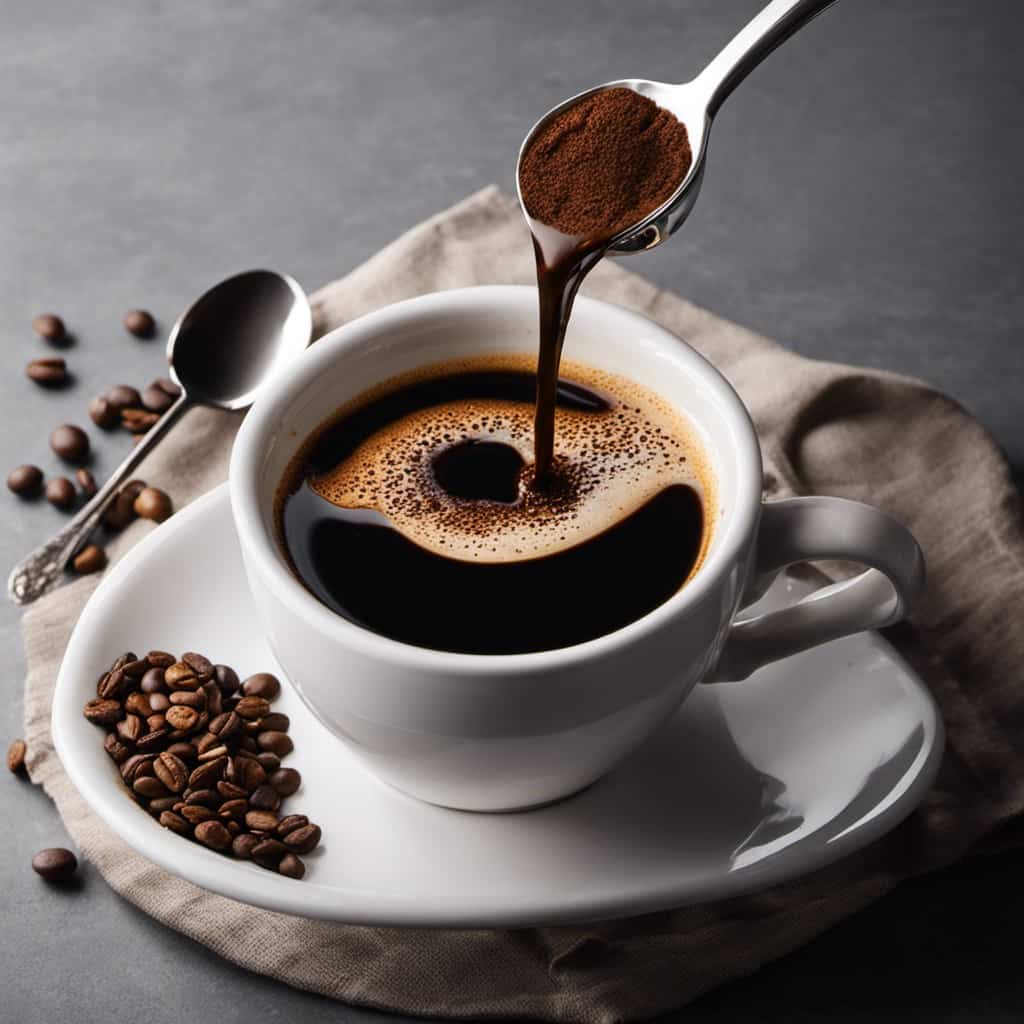
-
Versatile Brewing Techniques: The Flair PRO 2 offers a wide range of brewing techniques, allowing you to experiment and tailor your espresso to your taste. From manual pre-infusion to pressure profiling, this espresso maker gives you complete control over every aspect of the brewing process.Exceptional Espresso Quality: The Flair PRO 2 is designed to deliver exceptional espresso shots, with its precise temperature control and pressure regulation. Whether you prefer a smooth and balanced flavor or a bold and intense shot, the Flair PRO 2 will consistently produce espresso of the highest quality.
With the Flair PRO 2 Manual Espresso Maker, you can elevate your outdoor brewing experience to new heights. From maintenance to brewing techniques, this espresso maker has everything you need to unleash your inner barista in the great outdoors.
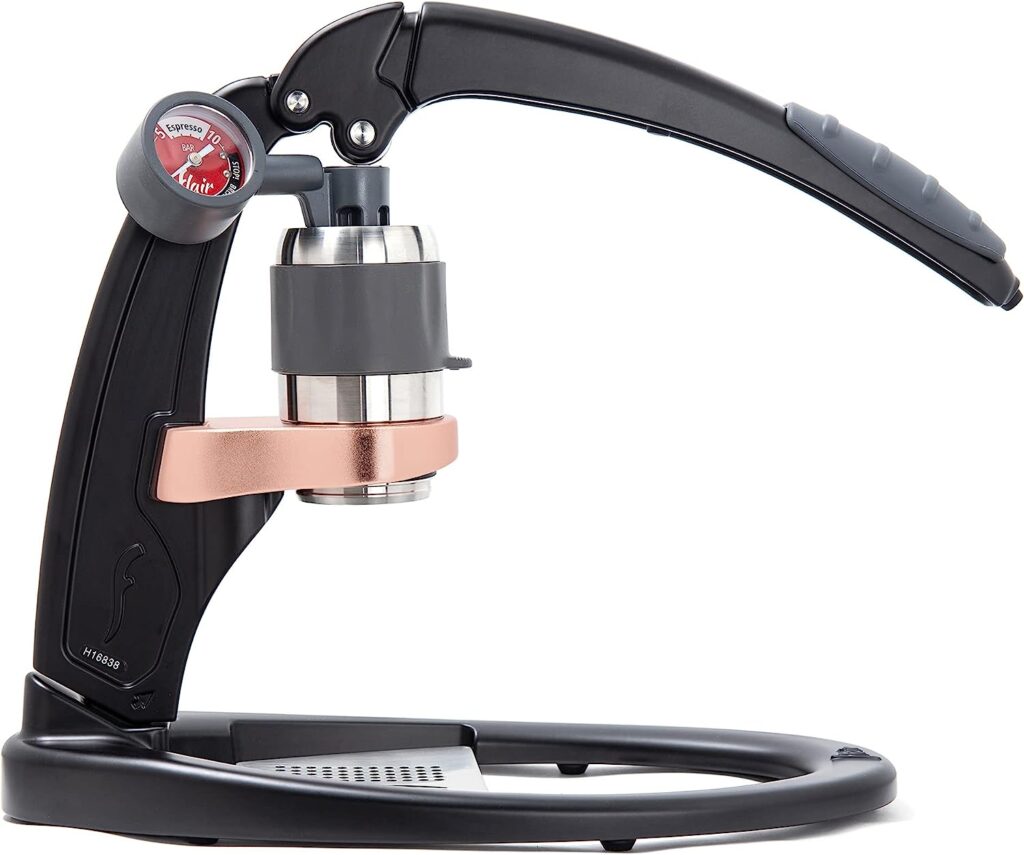
Compact and Portable Design
With its compact and portable design, the Flair PRO 2 Manual Espresso Maker is the perfect espresso machine to take on your outdoor adventures.
This sleek and lightweight espresso maker is specifically designed to be easily transported, allowing you to enjoy your favorite espresso wherever your explorations may take you. Its compact size ensures that it won’t take up much space in your backpack or camping gear, making it an ideal companion for any outdoor enthusiast.
The Flair PRO 2 Manual Espresso Maker’s portability doesn’t compromise on performance either. It’s equipped with high-quality components and features that deliver exceptional espresso shots, ensuring that you can savor the rich flavors and aromas of specialty coffee even in the great outdoors.
Precision Grinding With the Flair Royal Hand Grinder
To achieve the perfect grind size for your outdoor espresso brewing, we recommend using the Flair Royal Hand Grinder and carefully adjusting the settings to ensure precision and consistency. The grind size adjustment feature of the Flair Royal Hand Grinder allows you to have full control over the extraction process, maximizing the flavors and aromas in your espresso.
Here’s why the Flair Royal Hand Grinder is the ideal choice for precision grinding:
-
Consistent Grind: The grinder’s high-quality burrs ensure a uniform grind size, resulting in a balanced extraction and a rich, flavorful espresso.
-
Easy Adjustment: With its simple and intuitive grind size adjustment mechanism, you can easily switch between fine, medium, and coarse settings to match your desired brewing method.
-
Maximizing Extraction: By dialing in the grind size, you can optimize the extraction process, ensuring that the water extracts the desired flavors from the coffee grounds, resulting in a well-balanced and delicious cup of espresso.
The Flair Royal Hand Grinder is the perfect companion for outdoor espresso brewing, providing the precision necessary to create a truly exceptional coffee experience.

Using Specialty Coffee for Optimal Flavor
For the best flavor experience, we recommend brewing your outdoor espresso with specialty coffee. Specialty coffee beans are carefully selected and roasted to bring out the unique flavors and characteristics of each variety. When choosing the right beans for your outdoor brewing, consider factors such as origin, roast level, and flavor profile. Experiment with different varieties to find your preferred taste.
To further enhance the flavor of your outdoor espresso, it’s important to use brewing techniques that bring out the best in your chosen beans. Adjusting the grind size, water temperature, and extraction time can all impact your espresso’s flavor profile.
Try using a coarser grind and a higher water temperature for a bright and fruity espresso. For a more balanced and chocolaty flavor, opt for a finer grind and a slightly lower water temperature.
Table: Brewing Techniques for Different Flavors
Flavor Profile Grind Size Water Temperature Bright and Fruity Coarser Higher Balanced and Chocolaty Finer Slightly Lower
Reliable Water Heating System for Quick Boiling
We rely on a portable and efficient water heating system, like the JetBoil Flash, to quickly boil water for our outdoor espresso brewing. When it comes to brewing espresso in the great outdoors, having a reliable water heating system is crucial. Here’s why the JetBoil Flash is our go-to choice:
-
Speed: With its powerful burner, the JetBoil Flash can bring water to a rolling boil in just a matter of minutes. This means we can enjoy our espresso without any unnecessary waiting around.
-
Convenience: The JetBoil Flash is compact and lightweight, making it easy to transport and set up wherever we go. Its simple and intuitive design allows for effortless operation, even in the most remote locations.
-
Versatility: While the JetBoil Flash excels at boiling water, it also offers alternative heating options, such as simmering and frying. This versatility allows us to expand our outdoor cooking options beyond espresso, making it a valuable addition to our camping gear.
With the JetBoil Flash by our side, we can confidently brew our espresso in the great outdoors, knowing that we’ve a reliable and efficient water heating system at our disposal.

Embrace Your Inner Barista in the Great Outdoors
As coffee enthusiasts, experiencing the great outdoors allows us to embrace our inner barista and connect with the art of brewing espresso. There’s something truly magical about being surrounded by nature, with the soothing sounds of birds chirping and the gentle breeze caressing our faces, as we prepare our favorite cup of coffee.
It’s a moment of tranquility and connection with the world around us. Mindful coffee brewing in the outdoors allows us to fully appreciate the process, from weighing and pre-dosing the coffee beans to carefully adjusting the grind size. We can take our time, savoring the aroma and flavors, while immersing ourselves in the beauty of our surroundings.
It’s a chance to create lasting memories and indulge in the simple pleasures of life. So, let’s grab our equipment, find a serene spot, and let nature inspire our inner barista.
Frequently Asked Questions
Can I Use a Different Manual Espresso Maker for Outdoor Brewing?
Yes, you can use a different manual espresso maker for outdoor brewing. There are many portable espresso makers for camping that offer the convenience and quality you need to enjoy a delicious espresso in the great outdoors.

How Do I Determine the Ideal Grind Size for My Outdoor Espresso Brewing?
To determine the ideal grind size for outdoor espresso brewing, we carefully adjust the grind while considering the desired brew time. This ensures a rich and flavorful cup of espresso that perfectly captures the essence of the outdoors.
Are There Any Specific Types of Specialty Coffee That Work Best for Outdoor Espresso Brewing?
The best coffee beans for outdoor brewing techniques should be specialty beans from reputable local roasters. They offer optimal flavors that enhance the outdoor espresso experience, creating a truly indulgent and memorable moment.
Can I Use a Different Water Heating System Instead of the Jetboil Flash?
Yes, there are alternative water heating systems you can use instead of the Jetboil Flash. We have found success with other portable options like the MSR PocketRocket or the Primus Lite+.
What Are Some Additional Ways to Minimize My Impact on the Environment While Brewing Espresso Outdoors?
To minimize our impact on the environment while brewing espresso outdoors, we can prioritize eco-friendly coffee bean sourcing and opt for sustainable packaging options. It’s important to make conscious choices that align with our values and protect the planet we love.
Conclusion
As we bid farewell to the comforting routine of brewing espresso indoors, we embark on a thrilling journey of becoming outdoor baristas.
With the Flair PRO 2 Manual Espresso Maker as our trusty companion, we unlock a world of rich flavors and breathtaking views.
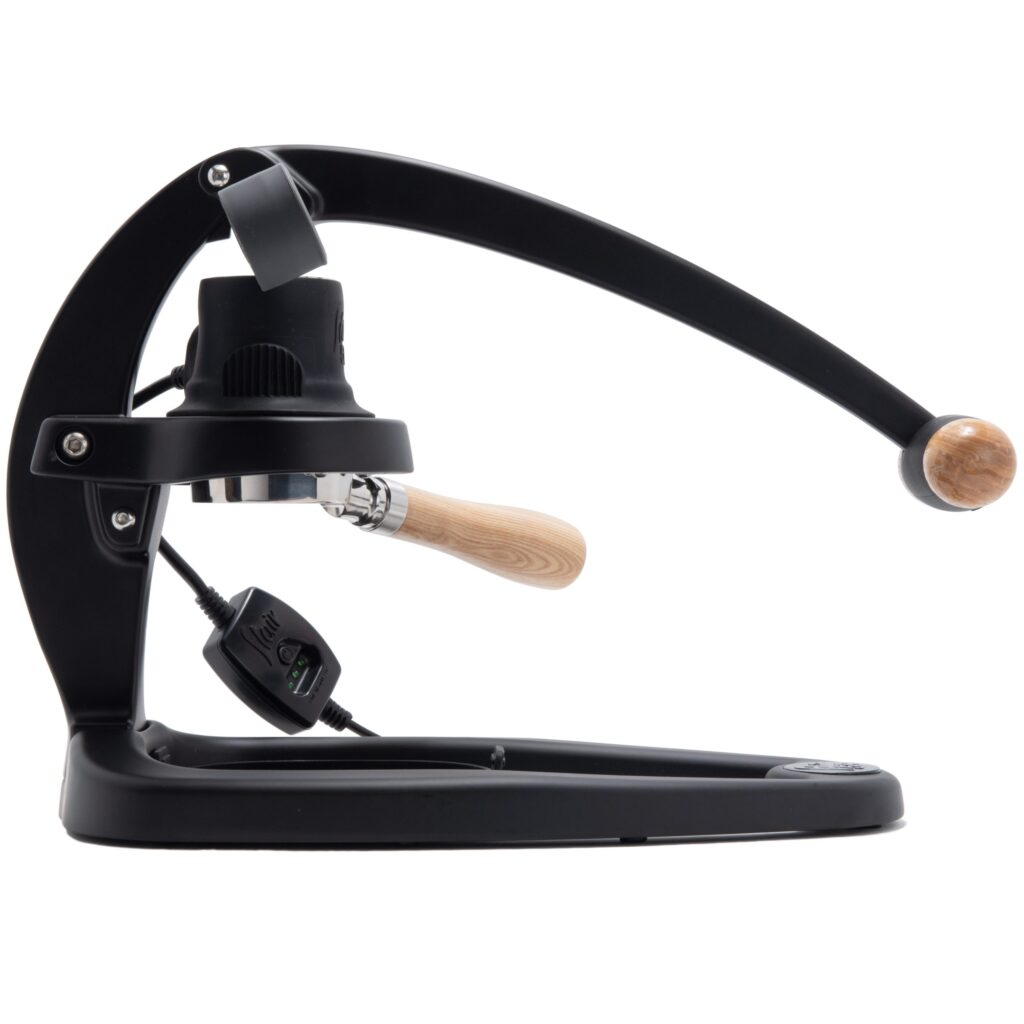
Let nature’s serenity and specialty coffee’s aroma awaken your senses and ignite your passion for the art of outdoor brewing.
So, grab your gear, embrace your inner barista, and let’s make memories in the great outdoors!
In the vast and diverse world of coffee, coffee alternatives, and tea, Olivia has found her calling. As an author and a dedicated coffee and tea aficionado, her work for Cappuccino Oracle reflects her profound love and understanding of the intricate complexities found within these beverages. Olivia’s passion for the subject serves as both a catalyst for her creativity and a connection point with her audience.
Olivia’s appreciation for coffee, coffee alternatives, and tea blossomed at an early age. She discovered that these beverages invigorated her senses and stimulated her creative spirit. From the nuanced flavors of single-origin roasts to the captivating narratives intertwined with coffee, coffee alternatives, and tea trade and culture, Olivia found an unlimited source of inspiration in her daily cup.
Her love for these beverages and her talent for storytelling eventually converged at Cappuccino Oracle. As an author, Olivia’s mission is to illuminate the intricate tapestry that makes up the world of coffee, coffee alternatives, and tea. Her articles span a diverse range of topics, encompassing everything from the unique flavors of different brews to the sociocultural history intertwined with their cultivation and consumption.
Espresso
Mochaccino – What Is It and How Do You Make It at Home
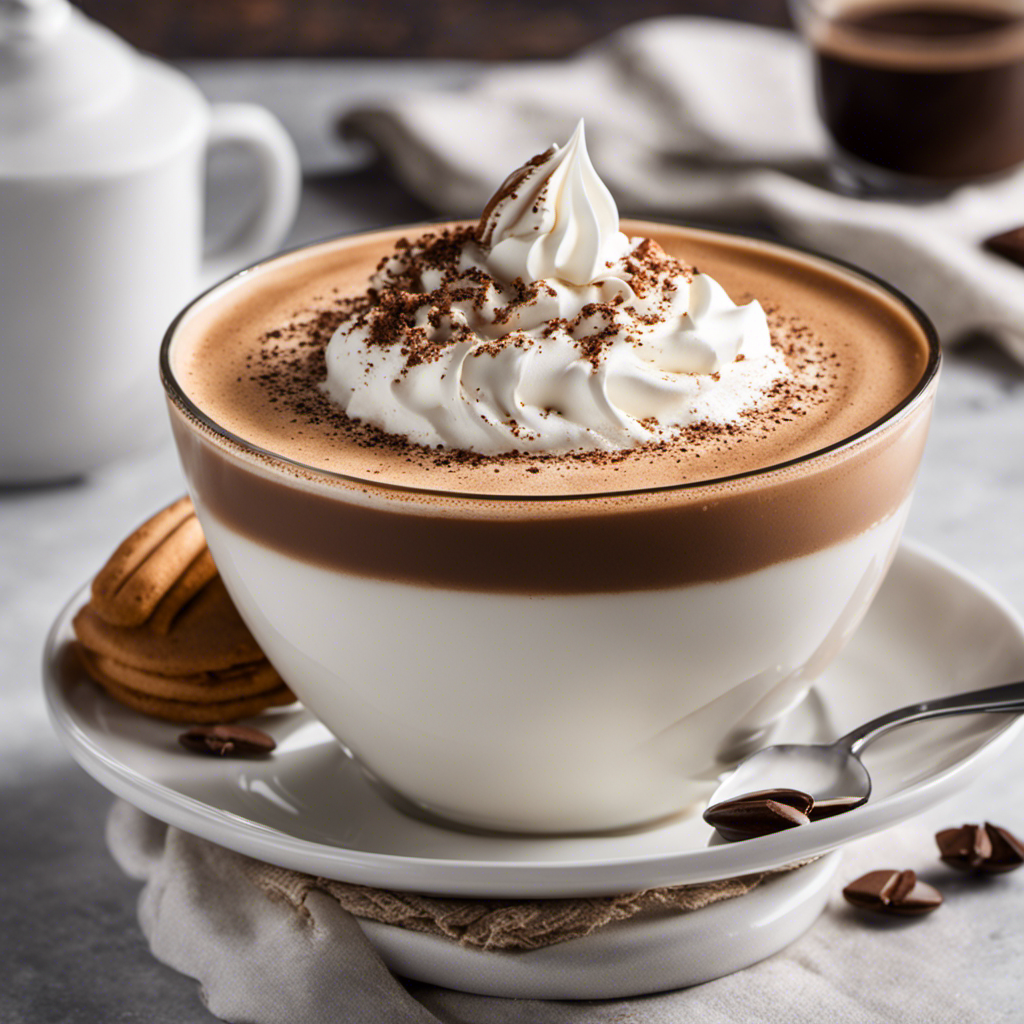
Have you ever pondered what makes a mochaccino so irresistibly delicious? Let me share with you that it’s the impeccable combination of bold espresso, creamy chocolate, and frothy milk.
And the best part? You can easily make this indulgent treat right in the comfort of your own home. In this article, I’ll guide you through the history, ingredients, and step-by-step process of creating the perfect homemade mochaccino.
Get ready to impress your taste buds and become your very own barista!
Key Takeaways
- The mochaccino originated in Italy in the 17th century as a combination of espresso and hot chocolate.
- The flavors of the mochaccino have evolved over time, with variations including caramel, vanilla, and peppermint.
- The cultural significance of the mochaccino varies in different countries.
- To make a homemade mochaccino, you will need strong brewed coffee, cocoa powder, milk, sugar, and whipped cream for topping.
History of the Mochaccino
I’ve read about the history of the mochaccino, and it’s fascinating how this delightful drink has evolved over the years.
The mochaccino, also known as a mocha, originated in Italy in the 17th century. It started as a combination of espresso and hot chocolate, creating a rich and indulgent beverage.
As time went on, the flavors of the mochaccino began to evolve. Today, you can find variations with added flavors like caramel, vanilla, or even peppermint.
In different countries, the cultural significance of the mochaccino varies. In Italy, it’s a staple in their coffee culture, while in the United States, it has become a popular choice among coffee enthusiasts.
The mochaccino has truly become a global favorite, adapting to different tastes and preferences around the world.
Ingredients for a Homemade Mochaccino
I can make a delicious homemade mochaccino with just a few simple ingredients and a little bit of time.
The key to a perfect mochaccino is combining the rich flavors of coffee and chocolate. For this, you’ll need strong brewed coffee, cocoa powder, milk, sugar, and whipped cream for topping.
To start, mix cocoa powder with a small amount of hot water to create a smooth paste. Then, heat milk on the stovetop until hot but not boiling. Add the cocoa paste and sugar to the milk, stirring until dissolved.
Next, pour the coffee into a mug and slowly pour the milk mixture over it. Finally, finish with a dollop of whipped cream. It’s a delightful treat that combines the best of both worlds – coffee and chocolate.
And if you’re looking for coffee alternatives or health benefits, a homemade mochaccino is a perfect choice.
Step-by-Step Guide to Making a Mochaccino at Home
With just a few simple steps and some common ingredients, you can easily make a delicious mochaccino at home. Here’s how:
-
Start by brewing a strong cup of coffee using your preferred method. You can use a traditional drip coffee maker, a French press, or even try alternative brewing methods like pour-over or cold brew for a unique flavor profile.
-
While your coffee is brewing, warm up some milk on the stove or in the microwave. You can use any type of milk you prefer, such as dairy milk, almond milk, or oat milk.
-
Once your coffee is ready, pour it into a mug and add a tablespoon or two of cocoa powder. Mix until the cocoa powder is fully dissolved.
-
Finally, pour the warm milk into the mug and stir well. You can also top it off with some whipped cream or chocolate shavings for an extra indulgent touch.
Making your own mochaccino at home not only allows you to control the quality of ingredients but also offers health benefits. The coffee provides a boost of energy and can improve cognitive function, while cocoa powder is rich in antioxidants and can boost mood. Additionally, using alternative milk options can cater to dietary preferences or restrictions.
Variations and Additions to the Classic Mochaccino Recipe
There are many ways to elevate the classic mochaccino recipe, such as adding a dash of cinnamon or a drizzle of caramel syrup for a hint of sweetness. But have you ever considered exploring different types of mochaccinos for their unique flavors and health benefits? Let’s take a look at some interesting variations:
| Type | Flavor Profile | Health Benefits |
|---|---|---|
| Matcha Mochaccino | Earthy and Creamy | High in antioxidants |
| Coconut Mochaccino | Rich and Nutty | Boosts metabolism |
| Protein Mochaccino | Creamy and Filling | Provides muscle recovery |
These different types of mochaccinos not only offer a diverse range of flavors but also come with their own set of health benefits. Now that we’ve explored the possibilities, let’s move on to some tips and tricks for perfecting your homemade mochaccino.
Tips and Tricks for Perfecting Your Homemade Mochaccino
To achieve the perfect homemade mochaccino, don’t forget to froth the milk until it reaches a creamy consistency. Frothing the milk adds that luxurious touch to your drink, creating a velvety texture that perfectly complements the rich flavors of chocolate and espresso.
Here are some tips and tricks to help you perfect your homemade mochaccino:
-
Use high-quality coffee beans: The best coffee beans for a mochaccino are those with a bold flavor profile. Look for beans with a rich, chocolaty undertone to enhance the chocolate flavor in your drink.
-
Experiment with homemade coffee alternatives: If you’re looking to switch things up, try using alternative coffee options like cold brew or espresso powder. These can add a unique twist to your mochaccino.
-
Adjust the sweetness: Mochaccinos are typically sweet, but you can adjust the sweetness to your preference. Add more or less chocolate syrup or sweetener to achieve the perfect balance for your taste buds.
-
Get creative with toppings: Don’t forget the finishing touches! Whipped cream, chocolate shavings, or a sprinkle of cinnamon can elevate the presentation and add an extra layer of flavor to your homemade mochaccino.
Frequently Asked Questions
Can I Use Regular Coffee Instead of Espresso in a Homemade Mochaccino?
Yes, you can use regular coffee instead of espresso in a homemade mochaccino. However, using espresso will give your drink a stronger and richer flavor, which is one of the benefits of using it.
How Many Calories Are in a Homemade Mochaccino?
I made a homemade mochaccino with whole milk and dark chocolate syrup. It has around 200 calories, but the nutritional value may vary depending on the ingredients used.
Can I Use Almond Milk Instead of Cow’s Milk in a Homemade Mochaccino?
Yes, almond milk can be used as a dairy-free alternative in a homemade mochaccino. It provides a creamy texture and a nutty flavor that complements the coffee and chocolate.
What Type of Cocoa Powder Is Best for Making a Mochaccino at Home?
When making a mochaccino at home, it’s important to choose the best cocoa powder. Look for high-quality brands, like Ghirardelli or Valrhona, for a rich and delicious flavor. Don’t forget to consider alternative milk options, like almond milk, for a dairy-free version.
Can I Make a Mochaccino Without a Milk Frother?
Sure, you can make a mochaccino without a milk frother. There are alternative methods like using a whisk or a handheld frother. These frothing techniques will give you a similar creamy texture.
Conclusion
In conclusion, the mochaccino is a beloved coffee beverage that combines the rich flavors of chocolate and espresso.
By following the step-by-step guide and using high-quality ingredients, you can easily make a delicious mochaccino at home.
Don’t be afraid to get creative with variations and additions to suit your taste.
With a little practice and a few tips and tricks, you’ll be able to perfect your homemade mochaccino and enjoy this indulgent treat whenever you like.
Justin is a seasoned author, coffee and tea enthusiast, and an essential member of the Cappuccino Oracle team. With a keen appreciation for the complexities of coffee, coffee alternatives, and tea, Justin has dedicated his professional career to exploring these realms and sharing his insights with readers worldwide.
Justin’s immersion in the world of coffee, coffee alternatives, and tea began at a young age, kindling a passion that extended beyond mere consumption. This love for these beverages led him to combine his talent for writing with his devotion to coffee and tea, bringing him to Cappuccino Oracle as a dedicated author.
Espresso
Iced Macchiato – What Is It and How to Make It at Home
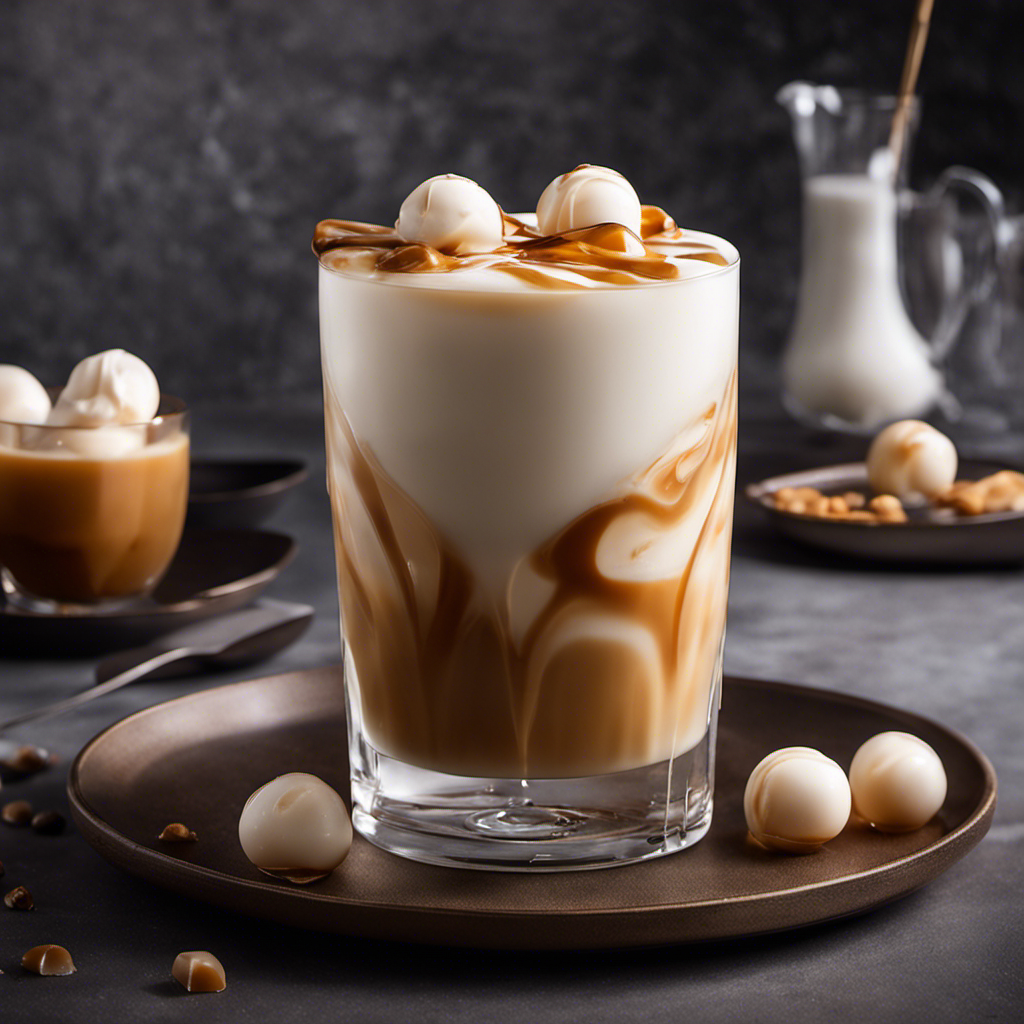
I enjoy a delicious iced macchiato on a warm summer day. Were you aware that it’s surprisingly simple to prepare at home? With just a few basic ingredients and some knowledge, you can savor this invigorating coffee drink whenever you desire.
In this article, I’ll share with you the secrets to making the perfect iced macchiato, from brewing the espresso to frothing the milk.
So grab your favorite mug and let’s get started!
Key Takeaways
- Iced macchiato originated in Italy as a variation of traditional macchiato.
- The base ingredients of an iced macchiato are espresso, milk, sweetener (optional), and ice.
- Brewing espresso for an iced macchiato requires precision and consideration of factors like grind size, brewing time, and water temperature.
- Frothing milk for an iced macchiato involves using techniques like using cold milk, alternative milk options, and a steam wand or frother.
The Origins of Iced Macchiato
I’ve always been curious about the origins of the iced macchiato. This popular coffee beverage has its roots in Italy, where the term ‘macchiato’ means ‘stained’ or ‘marked.’ Traditionally, a macchiato is made by adding a small amount of espresso to a cup and then ‘staining’ it with a dollop of frothed milk.
The iced macchiato, however, is a variation that emerged in recent years. It’s made by pouring espresso over a glass filled with ice and then adding a small amount of milk or milk foam. The result is a refreshing and flavorful drink, perfect for hot summer days.
Nowadays, there are many variations of the iced macchiato, with different flavors and toppings added to enhance the taste. From caramel to vanilla to chocolate, there’s an iced macchiato for every coffee lover’s preference.
Understanding the Ingredients
Understanding the ingredients is essential for making a delicious iced macchiato at home. When it comes to flavor profiles, the combination of sweet and bitter is what makes an iced macchiato so enticing. Here are some key ingredients to consider:
- Espresso: The base of an iced macchiato, providing a strong and rich flavor.
- Milk: Adds creaminess and balances out the espresso’s intensity.
- Sweetener: Optional, but commonly used to enhance the overall taste.
- Ice: Keeps the drink refreshing and cold.
- Optional flavorings: Vanilla, caramel, or chocolate syrups can be added for extra flavor.
Understanding different brewing methods is also important. Whether you prefer using an espresso machine, a French press, or a moka pot, each method can influence the taste and strength of your iced macchiato. Experimenting with different brewing techniques and ratios will help you find the perfect balance of flavors for your homemade iced macchiato.
The Art of Brewing Espresso
Brewing espresso is an intricate process that requires precision and skill. To achieve the perfect cup, espresso brewing techniques and the importance of water temperature can’t be overlooked.
When it comes to espresso brewing techniques, there are various methods to choose from. Some popular ones include the classic manual espresso machine, the convenient pod-based system, and the modern espresso machine with advanced features. Each technique requires careful consideration of factors such as grind size, brewing time, and pressure.
However, one common factor that’s crucial in all techniques is water temperature. The ideal water temperature for brewing espresso is between 195°F and 205°F. This range ensures proper extraction of flavors and oils from the coffee grounds, resulting in a rich and balanced espresso shot.
Transitioning to the next section, after perfecting the espresso shot, the focus shifts to perfecting the milk froth.
Perfecting the Milk Froth
I absolutely love experimenting with different techniques to perfect the milk froth for my iced macchiatos. It’s an art form in itself, and getting that perfect creamy texture on top of my espresso is essential for a delicious drink.
When it comes to creating the perfect milk froth, there are a few things to consider. Here are some tips to help you explore alternative milk options and troubleshoot common frothing issues:
- Use cold milk: Starting with cold milk will help create a better froth.
- Choose the right milk: Experiment with different types of milk, such as almond, oat, or soy, to find the one that froths best for you.
- Froth the milk properly: Use a steam wand or a frother to create a creamy and velvety texture.
- Watch the temperature: Overheating the milk can result in a burnt taste, so make sure to stop frothing when the milk reaches around 150°F.
- Clean and maintain your equipment: Regularly clean your steam wand or frother to ensure optimal frothing performance.
By following these tips, you’ll be on your way to creating the perfect milk froth for your iced macchiatos, and exploring alternative milk options along the way.
Happy frothing!
Step-by-Step Guide to Making Iced Macchiato at Home
To make an iced macchiato at home, I followed a simple step-by-step guide using a shot of espresso, a splash of milk, and a drizzle of caramel syrup.
First, I brewed a strong shot of espresso and let it cool.
Then, I filled a glass with ice and poured the espresso over it.
Next, I added a splash of milk, using almond milk as an alternative option for a creamy and nutty flavor.
To enhance the taste, I drizzled caramel syrup over the top, giving it a sweet and indulgent twist.
The beauty of making an iced macchiato at home is that you can get creative with variations.
You can experiment with different types of milk, such as oat milk or coconut milk, to suit your preferences.
Additionally, you can add flavored syrups like vanilla or hazelnut to customize your macchiato even further.
Enjoy this refreshing and satisfying beverage right in the comfort of your own home.
Frequently Asked Questions
What Is the Nutritional Content of an Iced Macchiato?
The nutritional content of an iced macchiato depends on the ingredients used. It can provide benefits such as a boost of energy from caffeine, but may also have health concerns like added sugars or high calorie content.
Can I Use Any Type of Milk to Make an Iced Macchiato?
I can use any type of milk to make an iced macchiato. Options like almond, oat, or soy milk can be used as alternatives. Additionally, different types of sweeteners can enhance the flavor.
How Long Does It Take to Brew Espresso for an Iced Macchiato?
To brew espresso for an iced macchiato, I recommend using an espresso machine and grinding fresh coffee beans. It typically takes about 25-30 seconds to extract the espresso. Froth the milk using a frother or steam wand until it reaches a creamy consistency.
Can I Use a Regular Blender to Froth the Milk for an Iced Macchiato?
Yes, you can use a regular blender to froth the milk for an iced macchiato. It’s a convenient and cost-effective alternative. You can also explore different milk options like almond, oat, or soy for a unique twist.
Can I Customize the Flavor of an Iced Macchiato by Adding Syrups or Toppings?
Yes, you can customize the flavor of an iced macchiato by adding syrups or toppings. It’s a great way to experiment with different milk alternatives and create your own unique and delicious drink.
Conclusion
In conclusion, making an iced macchiato at home is a simple process that can be mastered with practice. By understanding the origins of this popular drink, familiarizing oneself with the ingredients, and perfecting the art of brewing espresso and frothing milk, anyone can enjoy a delicious iced macchiato from the comfort of their own home.
Fun fact: Did you know that iced macchiatos are the most popular coffee choice among millennials, accounting for 40% of their coffee orders?
Noah, the Editor-in-Chief at Cappuccino Oracle, plays a pivotal role in shaping the voice and vision of our renowned platform. With an unwavering passion for coffee, coffee alternatives, and tea, Noah leads Cappuccino Oracle towards new horizons in the realm of coffee journalism.
Beyond his professional responsibilities, Noah serves as a mentor and guiding force for his team. His dedication to journalistic excellence and genuine love for coffee, coffee alternatives, and tea continue to inspire and motivate the Cappuccino Oracle family. In the ever-evolving world of these beverages, Noah’s leadership ensures that our platform remains at the forefront, delivering enlightening and enjoyable content to our readers worldwide.
-

 Coffee Basics3 days ago
Coffee Basics3 days agoThe Ultimate Guide To Buying Nespresso Pods: Where And How?
-

 Coffee Basics6 days ago
Coffee Basics6 days ago11 Best Medium Roast Coffees For Your Perfect Cup
-

 Coffee Basics6 days ago
Coffee Basics6 days agoStarbucks Venti Drinks: Customization And Pricing Guide
-

 Coffee Basics2 days ago
Coffee Basics2 days agoPerfect Your Espresso With Puck Screens: A Barista’s Secret
-

 Coffee Basics5 days ago
Coffee Basics5 days agoWhat Is Half-Caff Coffee? (And How Much Caffeine Is In It?)
-

 Coffee Basics5 days ago
Coffee Basics5 days ago9 Best Ground Coffee Brands For Your Perfect Cup
-

 Coffee Basics6 days ago
Coffee Basics6 days agoCan You Froth Oat Milk? Yes, And Here Are Six Ways To Do So
-
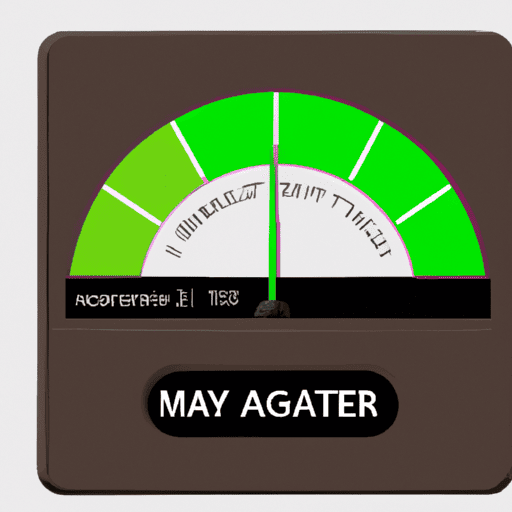
 Coffee Basics6 days ago
Coffee Basics6 days agoMaximizing Efficiency: Coffee Maker Wattage Guide





























